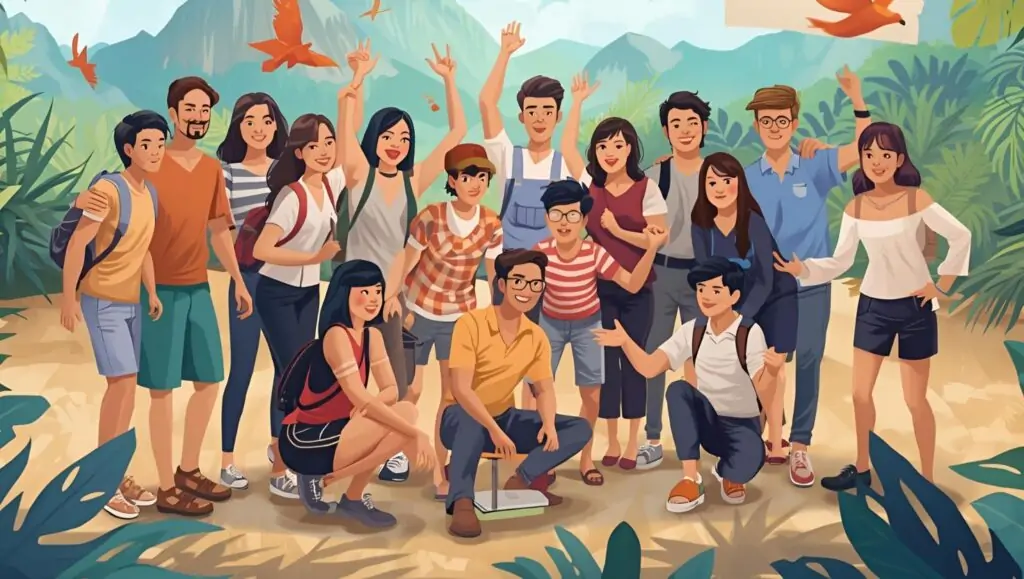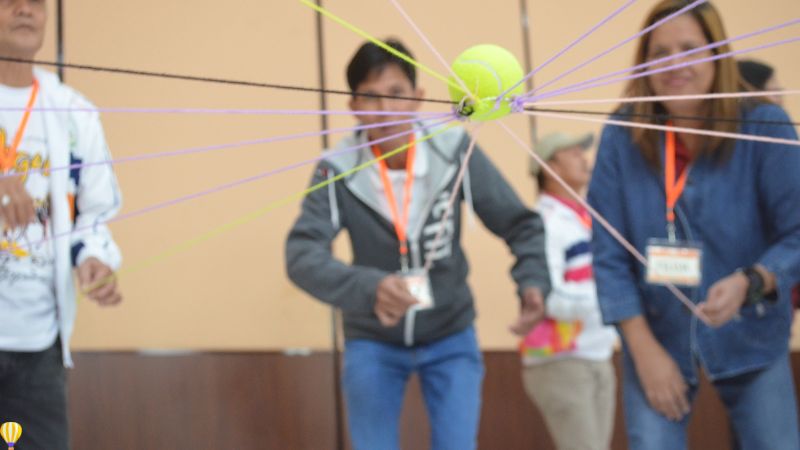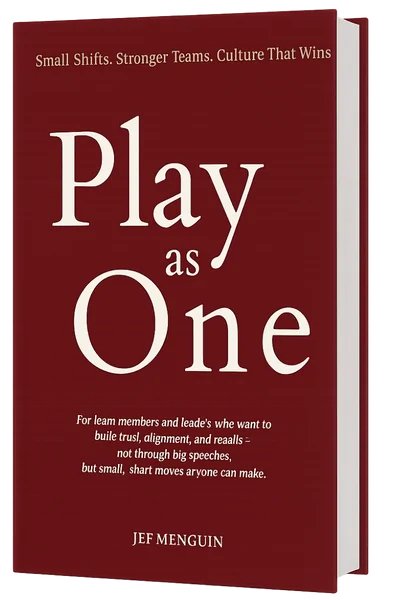Have you joined a team building where everyone laughed, ate, and played games—but nothing changed after? The next week, people went back to the same old problems. No better teamwork. No stronger trust. Just another outing.
This happens in many companies. Leaders spend money. Teams get entertained. But the real goal—better teamwork—doesn’t happen.
I’m Jef Menguin, a professional speaker and facilitator. For over 20 years, I’ve helped companies, schools, and local governments design team building programs that work. Not just fun for a day, but experiences that build habits teams can use every day.
I also work with Team Bayanihan. We believe the best teams grow when they live our Filipino values—malasakit (care), bayanihan (helping each other), diskarte (resourcefulness), and maasahan (reliability). These values make Filipino teams strong. Team building should bring them out, not cover them up.
That’s why we created this Team Building Activities Toolkit.
Find 25 simple activities you can use with your team. You don’t need a big budget. You don’t need fancy tools. Each activity comes with a quick guide so you can connect the lesson to your team’s real work.
Our promise: no more one-time games that people forget. These activities build trust, improve communication, and spark collaboration. You can use them in meetings, workshops, or even short breaks at work.
Team building is not just about playing. It’s about shifting how your team works together.
And that shift can start with one activity today.
Why Team Building Matters
Teams don’t fail because people are lazy. Most of the time, they fail because people don’t trust each other, don’t talk clearly, or don’t feel part of something bigger.
In Filipino workplaces, we see this a lot:
- Some teammates do only what is asked, nothing more. (kulang sa malasakit)
- Some stay quiet even when they see a problem. (mahiyain, takot magkamali)
- Some start strong but lose energy fast. (ningas cogon)
When these habits stay, the team suffers. Projects get delayed. Misunderstandings grow. Leaders feel frustrated.
That’s why team building matters. It gives people a safe space to practice new ways of working together. It builds trust, one activity at a time. It helps people speak up, listen better, and see that they need each other to succeed.
But here’s the truth: team building is not just about games or outings. It’s about creating small shifts that last beyond the activity. A good session helps people bring new behaviors back to work on Monday.
When done right, team building can:
- Turn mahiyain into confident voices.
- Turn diskarte into real solutions.
- Turn bayanihan into daily teamwork.
That’s the kind of team building we want you to create.
The 5 Categories of Team Building Activities
Not all team building activities are the same. Some build trust. Some improve communication. Some just make people laugh. That’s why it helps to group activities into clear categories. Think of these as tools in your toolbox—you pick the right one depending on what your team needs most.
Here are the five:
- Trust Builders – Activities that make people rely on each other. Trust is the foundation of every strong team. Without it, nothing lasts.
- Communication Boosters – Games that sharpen listening, speaking, and understanding. Teams that don’t talk clearly waste time and energy.
- Collaboration Challenges – Tasks that push people to solve problems together. This is where bayanihan comes alive.
- Creativity & Problem-Solving Games – Activities that help people practice diskarte (resourcefulness) and malikhain (creativity). Every team faces surprises—these activities prepare them to think fast and act smart.
- Energy & Fun Boosters – Quick, high-energy games that break walls and spark joy. Fun lowers stress and makes people more open to each other.
These categories make it easier for you to choose. For example, if your team struggles with trust, go straight to a Trust Builder. If they need more energy before a long meeting, use a Fun Booster.
Later in this toolkit, I’ll share 25 activities—five for each category. Each one comes with a short guide so you know how to run it and how to connect it to real teamwork.
1. Trust Builders
(Five activities that help your people rely on each other and feel safe working together.)
Activity 1: Two Truths and a Lie (Taglish Version)
Goal: Build openness and trust by sharing personal stories.
How to Do It:
- Ask everyone to prepare three statements about themselves. Two are true, one is false.
- Each person shares their three statements in front of the group.
- The group guesses which statement is the lie.
- Reveal the answer and laugh together.
Time Needed: 10–15 minutes.
Materials: None.
Debrief Questions:
- What did you learn about your teammates that you didn’t know before?
- How does knowing small truths about each other make working together easier?
- How can openness like this help us in meetings or projects?
👉 Tip: Encourage simple Taglish sharing. It keeps the mood light and real.
Activity 2: Trust Walk with Blindfolds
Goal: Build reliance and communication between partners.
How to Do It:
- Pair up team members.
- One partner is blindfolded (or closes their eyes). The other becomes the guide.
- The guide leads the blindfolded partner through a short obstacle course or walking path, using only words.
- Switch roles after one round.
Time Needed: 15–20 minutes.
Materials: Blindfolds or pieces of cloth.
Debrief Questions:
- How did it feel to guide someone who could not see?
- How did it feel to depend on another person’s instructions?
- What can this teach us about trust in daily work?
👉 Tip: Add Filipino flavor—use everyday items (chairs, tables, bags) as obstacles.
Activity 3: Circle of Support
Goal: Show teammates they are safe when they lean on others.
How to Do It:
- Ask the group to form a circle, shoulder to shoulder.
- One person stands in the middle, closes their eyes, and keeps their body stiff.
- That person slowly leans in any direction.
- The group gently pushes them back upright, passing them around the circle.
Time Needed: 10 minutes.
Materials: None.
Debrief Questions:
- What did you feel when you leaned and the group caught you?
- Why is it important to know that your teammates “have your back”?
- How do we build this same trust at work?
👉 Tip: Keep safety first. Remind the group to catch gently.
Activity 4: Human Knot (Unraveling Challenge)
Goal: Practice patience and teamwork while building trust.
How to Do It:
- Ask everyone to stand in a circle.
- Each person extends their right hand and holds the hand of someone across the circle.
- Then they extend their left hand to hold another hand from a different person.
- The group must now untangle themselves without letting go.
Time Needed: 15–20 minutes.
Materials: None.
Debrief Questions:
- How did the team work together to solve the knot?
- What happened when people started giving directions at the same time?
- How can this activity remind us to trust and listen at work?
👉 Tip: Expect laughter. The fun helps build bonds.
Activity 5: Commitment Contract
Goal: Show trust through promises made and kept.
How to Do It:
- Give each person a sheet of paper.
- Ask them to write one small promise they will do for the team this week. Example: “I will share updates before 5 PM daily.”
- Each person signs their paper and posts it on a wall or board.
- At the end of the week, review the promises together.
Time Needed: 20 minutes (plus follow-up).
Materials: Paper, markers, tape.
Debrief Questions:
- How does making a public promise change your level of commitment?
- What happens to trust when promises are kept—or broken?
- How can we use this idea to build maasahan teams?
👉 Tip: Remind them: without malasakit, promises become malas and sakit to the organization.
That’s the full Trust Builders set.
2. Communication Boosters
(Five activities that sharpen listening, speaking, and understanding in a safe, fun way.)
Clear communication is the backbone of every team. Yet in many Filipino workplaces, we often hear:
- “Akala ko yun ang instruction…”
- “Hindi ko nasabi kasi nahihiya ako.”
- “Mali pala ang pagkakaintindi ko.”
Miscommunication wastes time and causes conflict. These activities help your team practice the basics of clear, confident, and respectful communication.
Activity 6: Back-to-Back Drawing
Goal: Improve clarity of instructions and active listening.
How to Do It:
- Divide the team into pairs.
- Have each pair sit back-to-back. One person gets a simple picture (like a house, tree, or symbol).
- That person describes the picture using only words—no gestures.
- The other person tries to draw based on the instructions.
- Compare drawings with the original picture.
Time Needed: 15 minutes.
Materials: Papers, pens, pre-drawn simple images.
Debrief Questions:
- How easy or hard was it to explain without showing?
- What did you notice about your listening?
- How does this apply to giving instructions at work?
👉 Tip: Start with simple shapes, then increase difficulty.
Activity 7: Lost in Translation (Tagalog-English Clues)
Goal: Practice flexibility and clarity when explaining ideas.
How to Do It:
- Create a list of everyday phrases, mixing Tagalog and English. Example: “Bato-bato sa langit,” “Hit the ground running,” “Bahala na si Batman.”
- Divide the group into teams.
- One person from each team draws a phrase and explains it without using the exact words.
- Teammates must guess the phrase.
Time Needed: 15 minutes.
Materials: Slips of paper with phrases written on them.
Debrief Questions:
- How did you find ways to explain when the exact words weren’t allowed?
- How does this relate to explaining ideas to clients or teammates with different backgrounds?
- Why is creativity important in communication?
👉 Tip: Use local idioms or company-specific terms to make it relatable.
Activity 8: Message Relay with a Twist
Goal: Show how messages can change when passed along without care.
How to Do It:
- Divide into teams of 6–10 people.
- The first person reads an instruction (e.g., “Clap twice, spin, then jump.”).
- Instead of whispering words, each person must act out the instruction to the next.
- The last person performs the final version in front of everyone.
Time Needed: 10–15 minutes.
Materials: Slips of paper with instructions.
Debrief Questions:
- How did the message change as it was passed?
- What happens in real work when we don’t clarify instructions?
- What can we do to make sure the message stays clear?
👉 Tip: Keep instructions fun and a little silly. It makes mistakes more memorable.
Activity 9: Emotional Charades
Goal: Improve empathy and non-verbal communication.
How to Do It:
- Write down different emotions (e.g., angry, proud, confused, excited, worried).
- One person acts out the emotion without words.
- The group guesses the emotion.
- Discuss how different people interpret the same action.
Time Needed: 10 minutes.
Materials: Emotion cards.
Debrief Questions:
- How easy or hard was it to “read” the emotion?
- What happens at work when we misread how others feel?
- How can we listen not just with our ears, but also with our eyes and heart?
👉 Tip: Encourage exaggeration—Filipinos love expressive acting.
Activity 10: Listen First, Speak Later (Story Relay)
Goal: Train people to listen fully before responding.
How to Do It:
- Divide the group into small circles of 4–6.
- One person tells a short story (1–2 minutes).
- The next person must first repeat what they heard before adding their own story.
- Continue around the circle.
Time Needed: 20 minutes.
Materials: None.
Debrief Questions:
- How did it feel when someone repeated your story back to you?
- What difference does it make when people really listen before talking?
- How can we use this in meetings and client calls?
👉 Tip: Works best when stories are work-related (e.g., “a time I solved a problem,” “a time I felt proud at work”).
Quick Note
These activities are just a start. If you want more guides, full workshop designs, and deeper strategies for Filipino workplaces, visit our hub page: Team Building Philippines – Team Bayanihan. You’ll find more resources that can help you design experiences that last.
. Collaboration Challenges
(Five activities that let people practice bayanihan—working together to solve problems.)
Collaboration is more than dividing tasks. It’s about sharing ideas, making joint decisions, and supporting each other when things get tough. These activities put teams in situations where they must rely on bayanihan to succeed.
Activity 11: Bayanihan Challenge
Goal: Strengthen teamwork by solving a task together with limited resources.
How to Do It:
- Divide the group into small teams (5–8 members each).
- Give each team a set of simple materials—straws, tape, string, paper.
- Challenge them to build something in 15 minutes, like a bridge that can hold a bottle of water.
- Test each structure and celebrate the creative solutions.
Time Needed: 20 minutes.
Materials: Straws, tape, paper, string, a plastic bottle.
Debrief Questions:
- How did your team decide what to build?
- What role did each person play?
- How does bayanihan look in action here—and at work?
👉 Tip: Rotate roles (leader, builder, timekeeper) so everyone gets a turn.
Activity 12: The Meeting Canoe Blueprint
Goal: Reimagine meetings to make them more effective and collaborative.
How to Do It:
- Divide the group into teams of 4–6.
- Ask each team to list what makes meetings boring or useless.
- Then give them the challenge: design a “dream meeting” using the Meeting Canoe Blueprint (start well, build connection, discuss openly, decide clearly, end with action).
- Each group presents their blueprint.
Time Needed: 25 minutes.
Materials: Paper, markers.
Debrief Questions:
- What do most of our current meetings miss?
- How would our work improve if we followed the dream meeting rules?
- What small changes can we try in our next meeting?
👉 Tip: This works best if the group uses real examples from their workplace.
Activity 13: Survival Island (Philippine Twist)
Goal: Practice negotiation, decision-making, and teamwork.
How to Do It:
- Tell the group: “You’re stranded on an island in Palawan with 10 items. You can only keep 5.”
- Give the list of items (e.g., knife, rope, matches, water jug, cellphone, flashlight, blanket, fishing net, whistle, book).
- Each team discusses and decides which 5 items to keep.
- Groups share their decisions and reasoning.
Time Needed: 20 minutes.
Materials: Printed list of survival items.
Debrief Questions:
- How did you reach a decision as a group?
- Was there conflict, and how was it resolved?
- How do we negotiate and decide better at work?
👉 Tip: Add Filipino flavor by mentioning real island survival challenges.
Activity 14: Build a Bridge (Office Materials)
Goal: Encourage planning and resourcefulness.
How to Do It:
- Split the group into two teams.
- Each team builds half a bridge using limited office materials (folders, pens, tape).
- After 15 minutes, bring both halves together to see if they connect.
Time Needed: 25 minutes.
Materials: Office supplies.
Debrief Questions:
- How did your team plan without knowing what the other side was building?
- What was needed for the two halves to align?
- How does this apply when different departments must work together?
👉 Tip: Keep it fun—teams often laugh when their “bridge” doesn’t align.
Activity 15: Puzzle Race
Goal: Teach that collaboration beats competition.
How to Do It:
- Prepare puzzles (jigsaw, word, or picture puzzles).
- Give each team a puzzle set, but secretly mix some pieces into another team’s set.
- Teams race to finish—but they can only succeed by trading pieces with others.
Time Needed: 20 minutes.
Materials: Puzzle sets with mixed pieces.
Debrief Questions:
- How did you realize you needed the other team to succeed?
- What made it easier or harder to collaborate across teams?
- How does this relate to our company’s departments or branches?
👉 Tip: Choose puzzles with simple, colorful designs so it’s fun to complete.
Quick Note on Choosing Facilitators
You can run these activities yourself, but the results often depend on how well they’re facilitated. A good facilitator doesn’t just explain the rules. They draw out lessons, manage energy, and connect the activity to real workplace challenges.
It’s worth finding facilitators who understand Filipino values and can design activities that match your company’s goals. You can explore more on our guide here: How to Choose the Right Team Building Facilitators.
4. Creativity & Problem-Solving Games
(Five activities that encourage resourcefulness, quick thinking, and innovation.)
Every team faces unexpected challenges. Projects change, clients demand more, problems come out of nowhere. These activities let your people practice thinking on their feet. They use what’s available, and finding creative solutions together.
Activity 16: Diskarte Challenge
Goal: Build resourcefulness by solving a problem with limited materials.
How to Do It:
- Divide the group into teams of 4–6.
- Give each team a set of random objects (e.g., spoon, paper clip, rubber bands, tape, bottle).
- Give them a challenge, such as: “Move water from one side of the room to the other without using your hands.”
- Teams must design and use a solution in 15 minutes.
Time Needed: 20 minutes.
Materials: Random everyday objects.
Debrief Questions:
- What ideas did you try first?
- How did you adjust when things didn’t work?
- How does diskarte help us solve problems at work?
👉 Tip: Choose funny or unusual challenges—it makes solutions more creative.
Activity 17: Story Chain (Taglish Storytelling)
Goal: Spark imagination and practice building on others’ ideas.
How to Do It:
- Gather the group in a circle.
- One person starts a story with one sentence. Example: “Last Monday, I saw something surprising in the office…”
- The next person adds one sentence, continuing the story.
- Go around the circle until everyone has added at least one line.
- End with a funny or inspiring conclusion.
Time Needed: 10–15 minutes.
Materials: None.
Debrief Questions:
- How did it feel to build on someone else’s idea?
- What happens when we don’t listen carefully to the person before us?
- How can storytelling skills help us at work (e.g., in meetings or presentations)?
👉 Tip: Mix Tagalog and English freely—it makes the stories more natural.
Activity 18: Build the Logo
Goal: Strengthen team identity by designing a creative symbol.
How to Do It:
- Divide into small groups.
- Give them paper and markers.
- Ask each group to design a logo that represents their team’s values or spirit.
- After 15 minutes, each team presents their logo and explains its meaning.
Time Needed: 20 minutes.
Materials: Paper, markers, crayons.
Debrief Questions:
- What values did your logo highlight?
- How does this symbol reflect how you want to be seen as a team?
- How can visualizing our identity make us stronger?
👉 Tip: Display the logos around the room—it creates pride and ownership.
Activity 19: Escape Box (Mini Puzzle Game)
Goal: Develop problem-solving under pressure.
How to Do It:
- Prepare a small box with a “lock” (you can use a real lock, or just tape/seal).
- Hide 3–4 clues around the room. Each clue leads to the next.
- Teams must solve the puzzles to unlock the box within the time limit.
- Inside the box, place a small prize or message.
Time Needed: 25–30 minutes.
Materials: Box, lock/tape, printed clues, prize.
Debrief Questions:
- How did your team organize tasks to solve the puzzles?
- What worked better—working together or splitting tasks?
- How does solving puzzles under time pressure relate to our projects?
👉 Tip: Keep clues simple—riddles, math puzzles, or hidden words.
Activity 20: Market Day (Sell a Random Product)
Goal: Practice creativity, persuasion, and teamwork.
How to Do It:
- Divide the group into small teams.
- Give each team a random object (e.g., a shoe, banana, stapler, bottle cap).
- Their task: create a short sales pitch to “sell” the item as something valuable.
- Teams present their pitch in front of everyone.
Time Needed: 15–20 minutes.
Materials: Random objects.
Debrief Questions:
- How did you turn something ordinary into something valuable?
- What strategies helped your pitch succeed?
- How can creativity in selling ideas or products help us in our real work?
👉 Tip: Encourage humor—it makes the pitches memorable.
Quick Note on Creativity in Teams
Some teams think creativity is only for “artistic” people. That’s not true. Every workplace problem needs creativity—whether it’s finding a faster process, handling a difficult client, or fixing a mistake. These activities train your people to see possibilities, not just problems.
If you want to explore more ways to build creative teamwork, you can check our hub: Team Building Philippines – Team Bayanihan.
5. Energy & Fun Boosters
(Five activities to raise energy, break tension, and strengthen bonds through play.)
Fun is not a waste of time. When teams laugh together, they open up, feel safer, and connect faster. These activities are light, simple, and easy to use anytime you want to recharge your group.
Activity 21: Pinoy Henyo (Workplace Edition)
Goal: Build energy while practicing quick thinking.
How to Do It:
- Prepare words or phrases related to your workplace (e.g., “customer service,” “deadline,” “malasakit”).
- One person holds the word on their forehead without looking.
- The rest of the team gives only “yes,” “no,” or “maybe” answers to help them guess.
- Rotate players after each round.
Time Needed: 10–15 minutes.
Materials: Word cards.
Debrief Questions:
- How did you feel when the team was helping you guess?
- How does quick, clear feedback help at work?
- Why is it easier to succeed when the group is supportive?
👉 Tip: Use a mix of funny and serious words for balance.
Activity 22: Minute to Win It Games
Goal: Boost energy with fast-paced challenges.
How to Do It:
- Prepare simple one-minute challenges:
- Stack 6 cups into a pyramid.
- Bounce a coin into a glass.
- Keep 3 balloons in the air.
- Let individuals or pairs compete while the group cheers.
- Celebrate every attempt, not just the winners.
Time Needed: 10–20 minutes.
Materials: Cups, coins, balloons, glasses.
Debrief Questions:
- How did pressure change your focus?
- Why do small challenges bring out big energy?
- How can we bring this playful spirit to stressful moments at work?
👉 Tip: Keep the music upbeat for extra energy.
Activity 23: Zumba or Dance-Off
Goal: Break barriers and energize the group through movement.
How to Do It:
- Play a fun, upbeat Filipino or K-pop song.
- Invite a volunteer to lead a short dance (or follow a Zumba video).
- For variety, divide the group into teams and let each perform a short routine.
- End with a group applause for everyone’s effort.
Time Needed: 10 minutes.
Materials: Music, speakers.
Debrief Questions:
- How did moving together affect the energy of the group?
- Why is it important to break down formality sometimes?
- How can joy and energy help us work better as a team?
👉 Tip: Encourage laughter and silliness—it’s not about skill, it’s about fun.
Activity 24: Balloon Keep-Up Challenge
Goal: Promote teamwork and energy through a playful task.
How to Do It:
- Give each team 2–3 balloons.
- The goal: keep all balloons in the air for as long as possible.
- Add rules: no one can hit the same balloon twice in a row.
- Compete between teams or play as one big group.
Time Needed: 10 minutes.
Materials: Balloons.
Debrief Questions:
- What strategies helped keep the balloons up?
- How does this reflect balancing multiple tasks at work?
- Why is teamwork easier when everyone is engaged?
👉 Tip: Use larger balloons—it makes the game funnier.
Activity 25: Group Chant or Cheer Creation
Goal: Build team spirit and identity through sound.
How to Do It:
- Divide into small groups.
- Ask each group to create a short chant, cheer, or clap pattern that represents their team.
- After 5 minutes, each group performs for the others.
- End with one final cheer where everyone joins in together.
Time Needed: 15 minutes.
Materials: None.
Debrief Questions:
- How did your chant show your team’s personality?
- How can creating rituals like this build stronger identity?
- How can we use simple cheers or rituals to start meetings with energy?
👉 Tip: Encourage creativity—rhythms, Taglish lines, even funny sound effects.
Quick Note on Fun in Team Building
Some leaders think fun is “just a distraction.” But in reality, fun lowers stress, builds bonds, and creates a safe space for honest teamwork. When people enjoy being together, they work better together.
If you want to explore more ways to design high-energy team experiences, visit our hub: Team Building Philippines – Team Bayanihan.
How to Facilitate Team Building That Works
Team building is not about perfect games. It’s about how you guide people through the experience. A simple activity, if well facilitated, can create a lasting shift. A complicated one, if poorly handled, can end up as wasted time.
Here are five steps to make your team building sessions work:
Step 1: Set the Purpose Before the Play
Always start with the “why.”
- Ask yourself: What does my team need right now? Trust? Communication? Energy?
- Choose an activity that matches the goal.
- Tell your team the purpose. Example: “We’re doing this to practice listening better.”
👉 Without purpose, games feel like fillers. With purpose, they become tools.
Step 2: Choose the Right Activity for the Right Moment
- Use Trust Builders at the start of a program.
- Use Communication Boosters before meetings where clarity matters.
- Use Collaboration Challenges when projects need teamwork.
- Use Creativity Games to warm up brainstorming sessions.
- Use Fun Boosters to re-energize a tired group.
👉 Think of activities as medicine. You don’t give the same pill for every sickness.
Step 3: Always Debrief
The most powerful part of any activity is the conversation after. Without debriefing, lessons get lost.
Three simple debrief questions you can use for any activity:
- What happened?
- What did you learn?
- How can we apply this at work?
👉 Keep it short but meaningful. Even 5 minutes of reflection can double the value.
Step 4: Connect Activities to Filipino Values
Team building is strongest when people see themselves in it. Link each activity to values your team already knows:
- Malasakit → Caring enough to do more.
- Bayanihan → Helping each other, no one left behind.
- Diskarte → Finding resourceful solutions.
- Maasahan → Becoming reliable and consistent.
👉 This makes the lessons not just professional, but deeply cultural.
Step 5: Turn Events into Rituals
One-time activities bring short-term excitement. But repeated rituals build culture.
- Start every weekly meeting with a 5-minute activity.
- Use trust or communication games to warm up training sessions.
- End team huddles with a quick group cheer.
👉 The goal is not to have one big event per year. It’s to create small shifts every week.
Pro Tip: The Role of a Facilitator
As you lead these activities, remember: you are not just a game master. You are a facilitator of learning. Your job is to:
- Keep the energy alive.
- Guide the group reflection.
- Connect the lesson to real workplace needs.
If you feel your team needs deeper facilitation, you don’t have to do it alone. Professional facilitators can design experiences that match your goals and culture.
Common Mistakes Managers Make
Even with the best intentions, some team building programs fall flat. They’re fun in the moment but forgotten the next week. Why? Because leaders often repeat the same mistakes.
Here are the most common ones:
Mistake 1: Treating Team Building as Entertainment Only
Many managers think team building is just about games, food, or outings. While those are fun, they don’t change habits. Without purpose, the activities feel shallow.
👉 Fix it: Always connect the activity to a clear goal—trust, communication, or collaboration.
Mistake 2: Copy-Pasting Activities Without Context
Some teams download activities online or copy what another company did. But not every game fits your culture. What works for one group may fail for another.
👉 Fix it: Choose activities that reflect Filipino values like bayanihan and malasakit. Adapt instructions to your team’s needs.
Mistake 3: Skipping Reflection and Application
This is the biggest mistake. Teams play the game, laugh, and move on—without stopping to ask, “What did we learn?” Without reflection, nothing sticks.
👉 Fix it: Always debrief. Even three simple questions (“What happened? What did you learn? How can we apply this at work?”) make a huge difference.
Mistake 4: Believing One Big Event Is Enough
Some companies hold one big outing per year and call it “team building.” But real teamwork doesn’t come from one day—it comes from small, repeated practices.
👉 Fix it: Turn activities into rituals. Add 5–10 minutes of team building into weekly meetings. Build culture little by little.
Mistake 5: Choosing the Wrong Facilitator
When facilitators only focus on hype, dancing, and games, the team may enjoy—but they don’t grow. A poor facilitator can even turn people off from team building altogether.
👉 Fix it: Look for facilitators who understand your team’s goals and connect activities to workplace realities. We wrote a practical guide here: How to Choose the Right Team Building Facilitators.
Final Reminder
Team building is not about avoiding mistakes—it’s about creating the right shifts. When you focus on purpose, reflection, and cultural fit, the activities become powerful tools for growth.
Build Your Own Team Building Toolkit
Now that you’ve seen the 25 activities, how do you choose the right ones for your team? You don’t need to use them all. The key is to build a toolkit—a small set of activities you can pull out anytime, depending on what your team needs.
Step 1: Start with the Goal
Ask yourself:
- Do we need more trust?
- Do we need better communication?
- Do we need stronger collaboration?
- Do we want to spark creativity?
- Or do we just need a boost of energy?
Your goal will guide your activity choice.
Step 2: Pick One from Each Category
To keep it balanced, choose at least one activity from the five categories:
- Trust Builder
- Communication Booster
- Collaboration Challenge
- Creativity Game
- Fun Booster
This way, you don’t just fix one area—you strengthen the whole team.
Step 3: Plan the Flow
Good team building has rhythm:
- Start Tight → Build trust and comfort.
- Build Trust → Practice listening and clear communication.
- End Big → Celebrate collaboration and energy.
This flow creates a journey, not just random games.
Sample Half-Day Agenda
Here’s how you can combine activities into a simple 3-hour program:
1. Opening (10 minutes)
- Welcome, share the purpose.
- Quick icebreaker (Fun Booster: Pinoy Henyo).
2. Trust Builder (20 minutes)
- Trust Walk with Blindfolds.
- Debrief: “How do we rely on each other at work?”
3. Communication Booster (25 minutes)
- Back-to-Back Drawing.
- Debrief: “What makes instructions clear?”
4. Collaboration Challenge (30 minutes)
- Bayanihan Challenge.
- Debrief: “How does bayanihan show up in our projects?”
5. Break (10 minutes)
6. Creativity Game (25 minutes)
- Market Day.
- Debrief: “How do we sell ideas creatively in real life?”
7. Fun Booster (15 minutes)
- Balloon Keep-Up Challenge.
- Debrief: “Why is fun important for teamwork?”
8. Reflection & Commitments (20 minutes)
- Each member writes one small action they will bring back to work.
- Group shares and closes with a team cheer.
Step 4: Repeat and Adjust
- Try one small activity every week.
- Observe which ones your team enjoys and learns from most.
- Build your own “Top 5 Go-To Activities” and use them regularly.
Pro Tip
Your toolkit doesn’t have to be big. Even five well-chosen activities, if repeated, can transform your culture. The key is not the number of games, but the quality of facilitation and the commitments after each one.
If you want ready-made programs or customized toolkits for your company, we design them at Team Bayanihan.
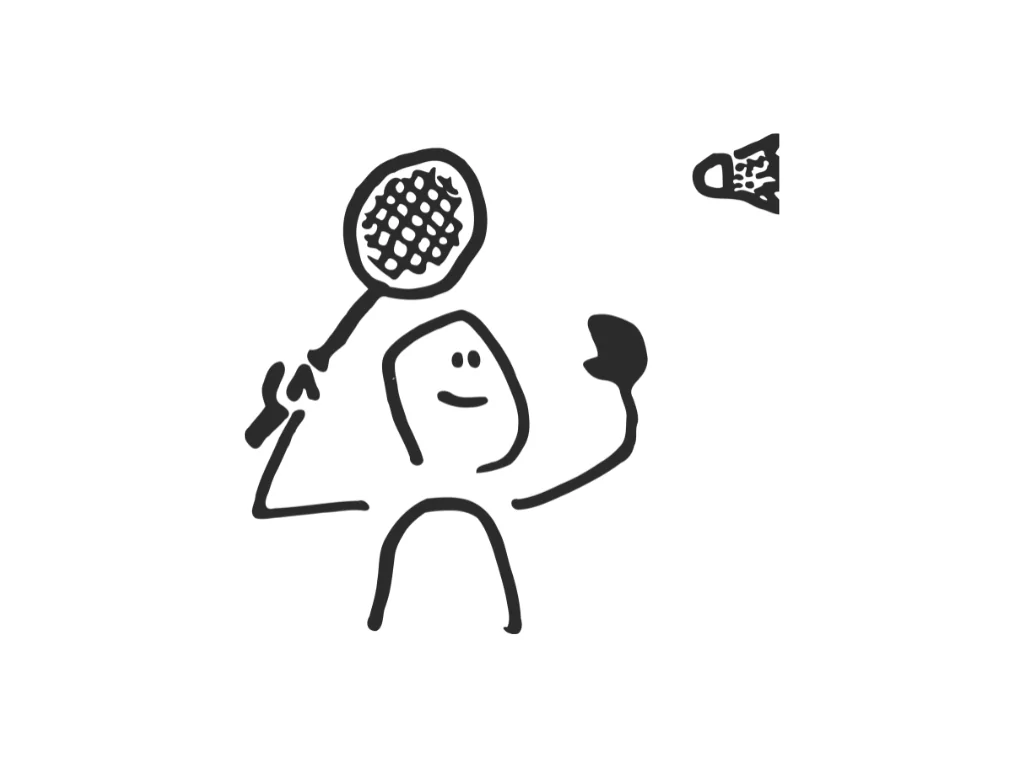
Unmasking the Team Player Myth in Philippine Workplace Culture
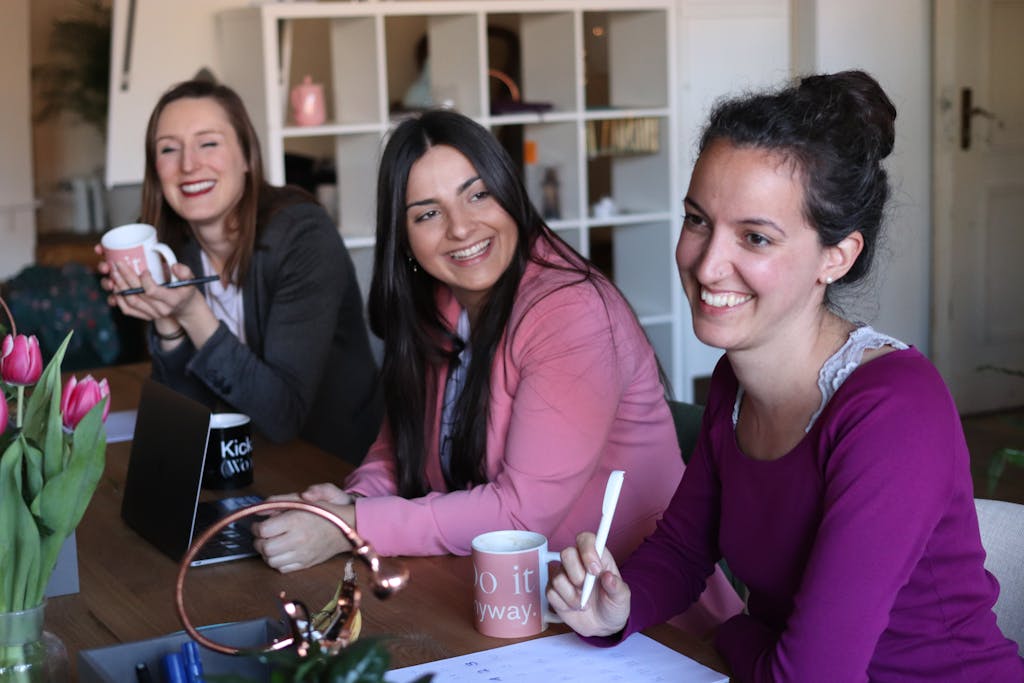
The Ultimate Guide to Team Building Activities (2025 Edition)
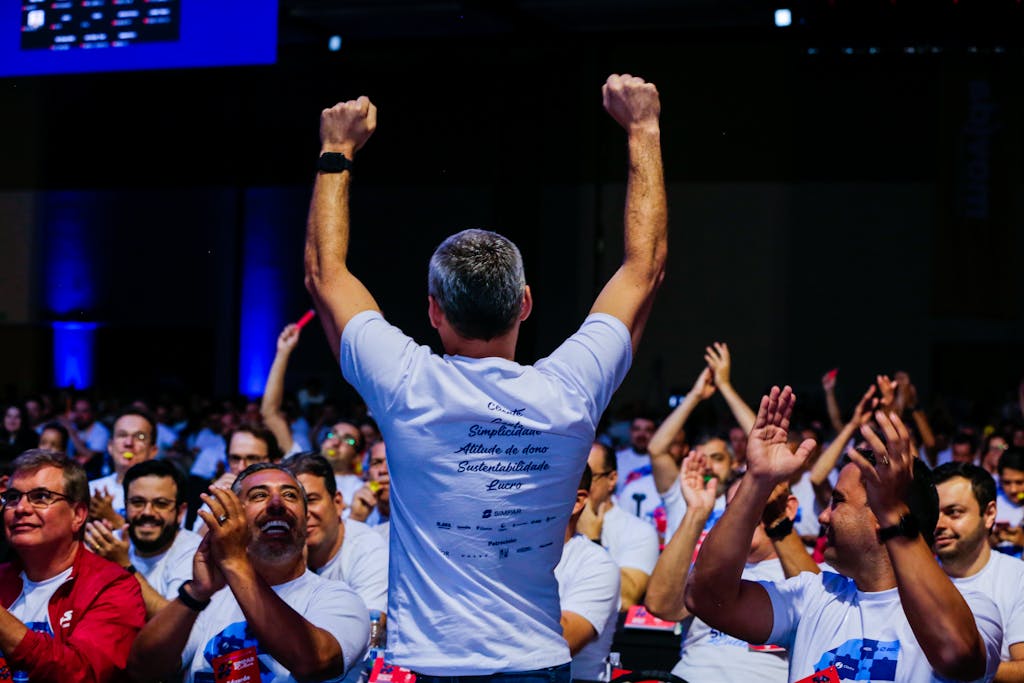
32 Filipino Motivational Speakers Who Inspire Action
